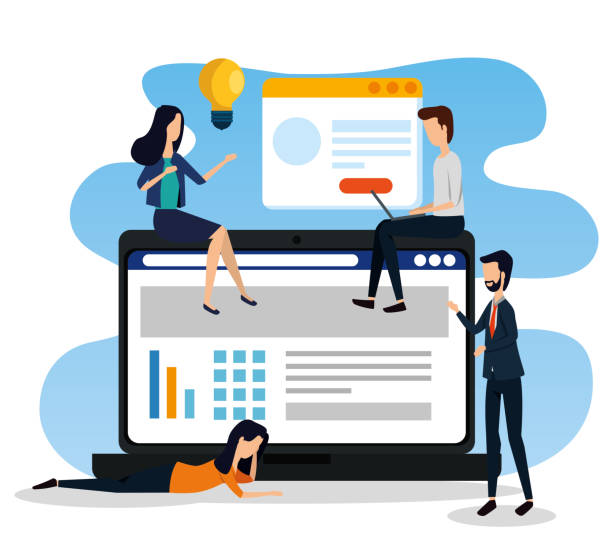Introduction to the Importance of Multilingual Website Design in Today’s World

In today’s interconnected world, having a website only in your native language deprives businesses of countless opportunities.
With the expansion of the internet and global access, users from various cultures and languages access information.
Multilingual website design is no longer a luxury option but a strategic necessity for any business or organization that aspires to #global_expansion and #audience_growth.
This approach enhances your understanding of new target markets and allows you to convey your message more effectively to international audiences.
The main goal of multilingual website design is to remove language and cultural barriers so that users can interact with your content in the most convenient way possible.
This not only leads to an improved user experience but also is an important factor in search engine optimization (SEO) for different geographical and linguistic markets.
Imagine a potential customer in Germany looking for your product or service; if your website is only in Persian, they will probably never find you, or if they do, they will quickly leave due to not understanding the content.
This topic has an important educational dimension: How can we make ourselves accessible to a global audience? Designing an international website requires a deep understanding of cultural and linguistic differences, beyond just word-for-word translation.
This is a comprehensive explanation of how to open the gates to global trade.
This process provides countless opportunities for growth and development and helps you not only surpass your competitors but also build a strong and reputable brand internationally.
Investing in multilingual website design means investing in the future of your business.
Are you worried your company’s old website is scaring away new customers? Rasaweb solves this problem with modern and efficient corporate website design.
✅ Increases your brand’s credibility.
✅ Helps attract targeted customers.
⚡ Contact Rasaweb for a free consultation!
Advantages and Challenges of Multilingual Website Design
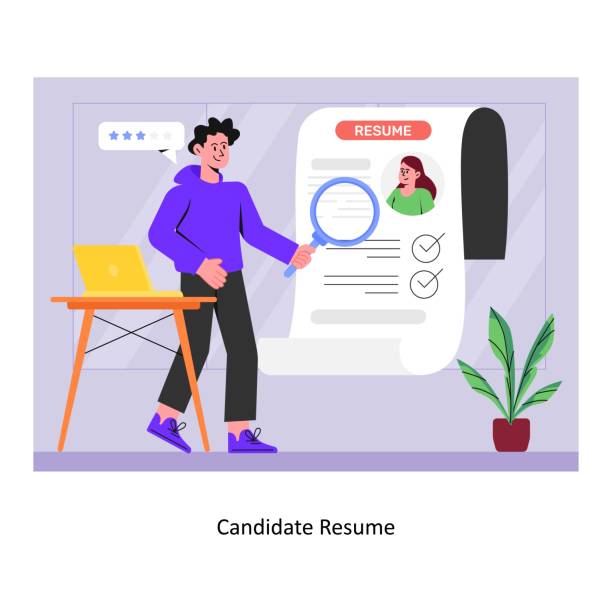
Multilingual website design comes with numerous benefits, among the most important of which are increased access to global markets, improved international SEO, and strengthened brand credibility.
A website offered in multiple languages gives users a sense of respect and closeness, as they can receive information in their native language.
This directly positively impacts the Conversion Rate and increases customer loyalty.
Furthermore, search engines prefer multilingual websites for local search results in different countries, which means increased organic and targeted traffic.
However, this approach also has its specific challenges that require careful planning and correct execution.
One of the biggest challenges is the quality of content translation and localization.
Machine translation often cannot correctly convey cultural nuances and specific idioms and may lead to misunderstandings or even offense.
Questionable content in this regard can result from poor translation quality, which not only damages brand credibility but also severely diminishes the user experience.
Other challenges include technical complexities in managing multiple language versions, updating content in all languages, and ensuring compatibility with SEO principles for each language.
Proper management of hosting and technical infrastructure to support traffic and data for different languages is also a specialized challenge.
Also, maintaining design and user experience consistency across all language versions is very important.
For example, is the text direction (right-to-left for Persian and Arabic, or left-to-right for English) correctly implemented? Are images and graphics adapted for each culture? These are questions that need to be answered before starting a multilingual website design project.
Ultimately, a significant time and financial investment is required to do this correctly to ensure return on investment.
Strategic Planning for Multilingual Website Implementation
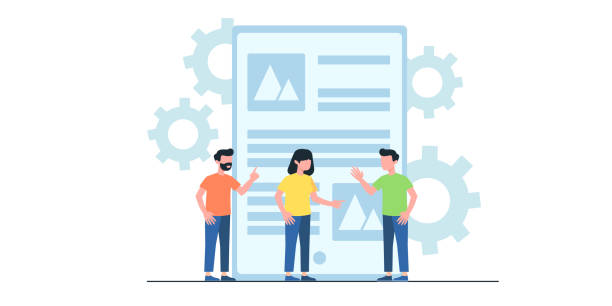
Before any practical action for multilingual website design, a precise and comprehensive strategic plan is essential.
This stage forms the foundation and basis of your project’s success.
The first step is to accurately identify your target audience and the languages you intend to offer your site in.
This research should include examining demographic, cultural, economic data, and even user behavioral preferences in each region.
Is your focus on European or Asian markets? Are there more commonly used languages in those regions that should be prioritized?
Next, you need to define your content strategy for each language.
Will all existing content be translated into new languages, or will specific content be produced for each target market? The quality and accuracy of translation, especially for specialized or sensitive content, are of high importance.
Choosing the right Content Management System (CMS) is also a key decision.
Some CMSs like WordPress (with plugins such as WPML) or Drupal (with native multilingual capabilities) perform better for managing multilingual content.
This choice should be based on your technical needs, budget, and team capabilities.
Accurate budgeting and resource allocation for translation, localization, technical development, and marketing for each language are also requirements of this phase.
Ignoring any of these can lead to project failure.
Here’s a comparative table of different CMS approaches for multilingual support to guide your choice:
| Feature | WordPress (with plugin) | Drupal | Custom Frameworks |
|---|---|---|---|
| Ease of Use | Very High | Medium | Depends on team skill |
| Native Multilingual Capability | Requires plugin | Very Good | Requires manual implementation |
| Flexibility | Medium to High | Very High | Very High |
| Initial Cost | Low to Medium | Medium to High | High |
Technical Aspects of Multilingual Website Design: SEO Principles and Hosting
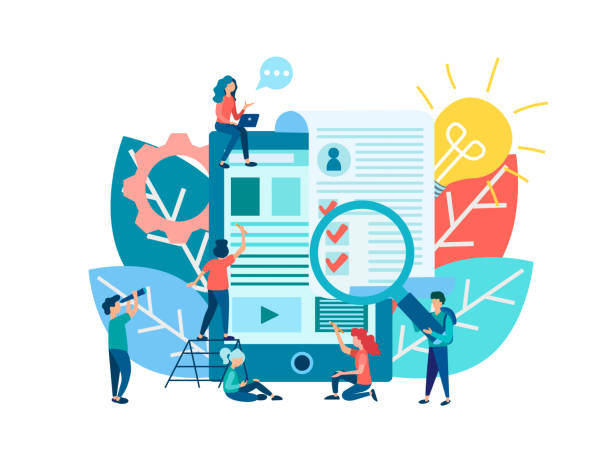
Multilingual website design is not limited to content translation; it also involves complex technical aspects crucial for search engine success (SEO) and delivering a flawless user experience.
One of the most important technical decisions is choosing the appropriate URL structure.
You can use subdomains (e.g., `de.example.com` for German), subdirectories (e.g., `example.com/de/`), or even separate domains (e.g., `example.de`).
Each of these methods has its advantages and disadvantages, and the optimal choice depends on your overall strategy and resources.
Google typically prefers subdirectories due to their ease of SEO management and domain authority.
Correct implementation of Hreflang tags is absolutely essential for search engines.
These tags tell Google and other search engines which pages are intended for which languages and geographical regions, preventing duplicate content and directing users to the correct language version.
Ignoring Hreflang can lead to serious damage to your international SEO.
Furthermore, optimizing keywords for each language, distinct from merely translating keywords, requires in-depth research into native search terms in each market.
In the field of hosting, choosing a web hosting provider that supports a strong CDN (Content Delivery Network) can significantly increase site loading speed for users worldwide.
Loading speed is a critical factor in user experience and SEO ranking.
This is a specialized aspect that requires special attention.
Also, ensuring that your servers can handle traffic from different parts of the world and are always available is very important.
The educational aspect of this phase is vital for your technical team to prevent technical issues that could harm user experience and rankings.
Optimal multilingual website design requires a deep understanding of these technical details.
Is your company’s website as professional and trustworthy as it should be? With specialized corporate website design by Rasaweb, create an online presence that reflects your credibility and attracts more customers.
✅ Build a powerful and professional image for your brand
✅ Convert visitors into real customers
⚡ Get a free consultation now!
Content Translation and Localization: Beyond Words

Content translation for a multilingual site is not just a lexical transfer; beyond that, it is localization.
Localization means fully adapting the content to the culture, customs, preferences, and even thought patterns of the audience in a specific region.
This includes changes in images, colors, symbols, currency, dates, phone number formats, and even the type of humor used in the text.
For example, an image that is perfectly normal in one culture might be considered offensive in another.
Therefore, careful selection of visual elements is as important as text translation.
One of the main challenges is preventing low-quality machine translations that can damage your brand’s credibility.
Using professional native translators who are fully familiar with your industry and proficient not only in the language but also in the target culture is crucial.
This educational and specialized approach ensures that your message is conveyed correctly and respectfully.
Also, it should be noted that some terms or phrases in one language may not have an exact equivalent in another, and the translator must be able to find the best alternative that accurately conveys the meaning.
The quality of localization directly impacts user experience and conversion rates.
A user is more likely to convert into a customer when they feel the content is personalized for them.
For this reason, multiple reviews and feedback from native speakers are very important.
This is a complete explanation of the complex process that distinguishes multilingual website design from a simple translation.
Additionally, local legal issues and regulations (such as GDPR in Europe) must also be considered in content localization and privacy policies.
This part of the work requires great precision and attention to prevent unforeseen problems.
Choosing the Right Platform and Tools for Multilingual Website Design

Choosing the right platform for multilingual website design is one of the crucial decisions that impacts the efficiency, scalability, and overall cost of your project.
Content Management Systems (CMS) such as WordPress, Drupal, Joomla, and Shopify are popular options, each with its own advantages and limitations.
WordPress, with its vast ecosystem of plugins (like WPML or Polylang), ease of use, and large user community, is very suitable for small to medium-sized projects.
Drupal, with its native multilingual capabilities and high flexibility, is a better choice for larger and more complex projects requiring deep customization.
In addition to the main platform, choosing translation and content management tools is also very important.
Some cloud translation services (Translation Management Systems – TMS) like MemoQ, Trados, or Smartcat allow you to manage the translation process, facilitate collaboration with translators, and create Translation Memory to maintain consistency and reduce costs.
These tools are specialized and essential for projects with large volumes of content and frequent updates.
Also, attention should be paid to version control tools like Git for managing code and content in development and production environments.
These tools help development teams track and integrate changes in an organized manner.
Guidance on choosing these tools should be based on the project’s actual needs, the team’s expertise level, and the available budget.
For instance, if your team is small and has a limited budget, WordPress with free or low-cost plugins can be a good start.
However, if you are looking for a scalable and highly customized solution, Drupal or development with custom frameworks might be more suitable.
Smart tool selection is the cornerstone of successful multilingual website design.
Maintenance and Updates of Multilingual Websites

Multilingual website design is just the beginning; continuous maintenance and updating of these websites are equally vital.
Website content is dynamic and regularly updated, whether in the form of new articles, fresh products, company news, or changes in services.
Ensuring that all these updates are published simultaneously and with the same quality across all language versions is a major management challenge.
This process requires a clear and efficient workflow to prevent inconsistencies and outdated information.
One important aspect of maintenance is managing new translations.
Every time new content is added or existing content changes, the translation and localization process must be repeated for those languages.
This can be costly and time-consuming, especially if the volume of content is large.
Using Translation Memory and translation management tools can help reduce costs and increase speed.
Furthermore, continuous SEO monitoring for each language version is essential.
Keyword rankings, organic traffic, and backlinks should be individually reviewed for each language to quickly identify and resolve issues.
This aspect of maintenance is an important news and analytical component, as it helps you react quickly to changes in search algorithms or market trends.
Technical website maintenance also includes updating plugins, themes, and the CMS core, and ensuring security and loading speed for all languages.
Any security vulnerability or speed reduction can harm user experience and rankings.
User feedback from different language versions should also be actively collected and used for continuous site improvement.
Here is a table of key maintenance tasks for a multilingual website that can serve as a practical guide:
| Maintenance Task | Suggested Frequency | Responsible Party |
|---|---|---|
| Update translated content | Weekly/Monthly (depending on content) | Content Team/Translators |
| Monitor international SEO | Monthly | SEO Specialist |
| Technical CMS/Plugin updates | Quarterly/As soon as available | Technical Team |
| Check loading speed and performance | Monthly | Technical Team |
| Data backup | Daily/Weekly | Server/Hosting Manager |
Measuring Success and Analyzing Multilingual Website Performance
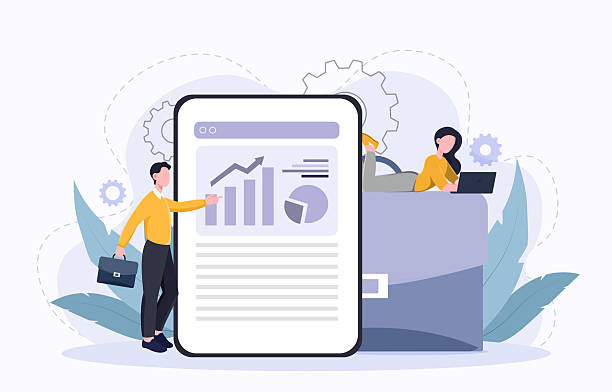
After investing in multilingual website design and its continuous maintenance, measuring success and analyzing performance are essential to ensure return on investment and continuous optimization.
Using web analytics tools like Google Analytics allows you to track and analyze performance data for each language version separately.
This capability is vital because the performance of one language may differ from another and require its own specific optimization strategies.
Key Performance Indicators (KPIs) that should be monitored include website traffic by language and geographical location, Conversion Rate for each market, Bounce Rate, average time spent on site, and pages visited.
For example, if the bounce rate on your Spanish website version is high, it may indicate issues with content localization, loading speed, or even product fit for the Spanish-speaking market.
This is an analytical and specialized approach that provides you with actionable insights.
Also, monitoring keyword rankings in local and international search engines for each language is essential.
Does your site rank well for important keywords in Germany, France, or Japan? SEO tools like SEMrush or Ahrefs can be helpful in this regard.
Reviewing user feedback through surveys or user experience monitoring tools also provides valuable information that may not be obtainable through quantitative data.
Finally, a comprehensive analysis of all this data helps you adjust your strategies, optimize resources, and ensure the continuous success of your multilingual website.
This process is an explanation for a deeper understanding of your international customers.
Are you tired of your company’s website not being seen as it should be and losing potential customers? Solve this problem forever with professional and effective website design by Rasaweb!
✅ Increase brand credibility and gain customer trust
✅ Attract targeted sales leads
⚡ Contact us now for a free consultation!
Common Mistakes in Multilingual Website Design and Prevention Strategies
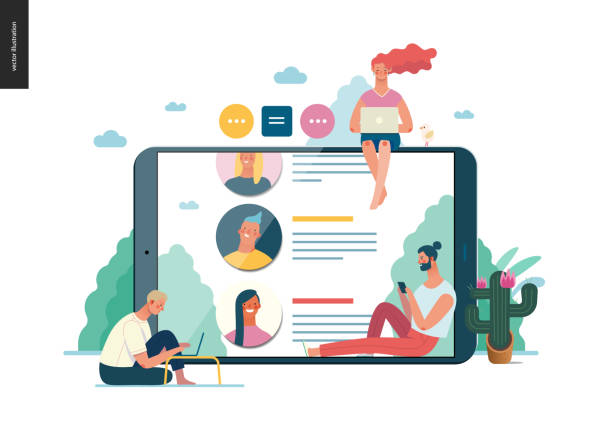
In the process of multilingual website design, businesses often make mistakes that can seriously harm their credibility, SEO, and user experience.
Recognizing these common mistakes and adopting preventive solutions is crucial for success.
One of the most common errors is relying solely on machine translation without human review.
While machine translation tools have made significant progress, they can never replace cultural nuances, local idioms, and appropriate tone in different languages.
Questionable content or ridiculous content resulting from poor translation can immediately drive users away from your site.
Another mistake is ignoring the technical aspects of international SEO.
Improper use of Hreflang tags, inappropriate URL structure, or failure to optimize keywords for each language can prevent search engines from correctly indexing your site or displaying it to your target audience.
This is a specialized deficiency that requires careful attention.
Furthermore, a lack of understanding of local culture and incomplete localization leads to content that is foreign and unappealing to the audience.
This means more than just translating words; it includes adapting to values, lifestyles, and visual preferences.
Slow website loading speed in different parts of the world, due to inadequate hosting or lack of CDN usage, can lead to high bounce rates and user dissatisfaction.
Also, failing to provide customer support in local languages, even if your site is multilingual, can harm the user experience.
To prevent these issues, it is recommended to:
- Always use professional native translators and have the content reviewed by native speakers after translation.
- Hire an international SEO specialist to correctly implement technical SEO aspects.
- Conduct thorough cultural research before publishing and adjust content and design accordingly.
- Use CDNs and powerful servers to ensure high loading speed worldwide.
- Provide multilingual customer guidance and support.
By following these tips, you can avoid many common mistakes in multilingual website design and achieve greater success.
The Future of Multilingual Website Design and Emerging Trends
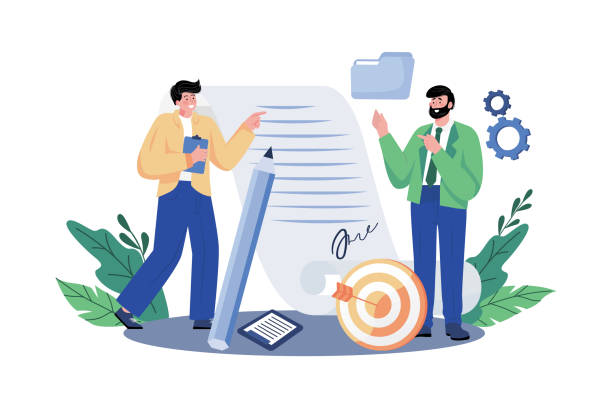
The future of multilingual website design is rapidly evolving, with new trends emerging that are revolutionizing how users interact with web content.
One of the most important of these trends is significant advancements in Artificial Intelligence (AI) and Neural Machine Translation (NMT).
While human translation remains highly important, AI can increasingly be used as a powerful auxiliary tool to increase speed and reduce initial translation costs.
This technology can help businesses quickly enter new markets and translate vast amounts of content in a short time.
This is important news.
Another trend is the rise of multilingual voice search.
With the popularity of voice assistants like Siri, Google Assistant, and Alexa, optimizing content for voice searches in different languages is becoming increasingly important.
This type of search is often more natural and longer than text searches and requires different SEO strategies.
Allocating resources for voice SEO in various languages will be a specialized and essential aspect.
Content personalization based on language and geographical location will also become a standard.
Websites will be able to offer content tailored to individual preferences and the user’s cultural context, even beyond mere translation.
This user experience will be much richer and more engaging.
Also, attention to global accessibility standards (Web Accessibility) will become more important to ensure that multilingual sites are usable by people with disabilities worldwide.
Multilingual website design in the future will increasingly move towards intelligent interaction, deep personalization, and universal accessibility, and companies must be prepared to leverage these opportunities.
This is an analysis of the path ahead.
Frequently Asked Questions
| Question | Answer |
|---|---|
| What is a multilingual website? | A website whose content is available to users in more than one language. |
| Why should I make my site multilingual? | To access more audiences in global markets, improve user experience, and enhance international SEO. |
| What are the technical approaches to building a multilingual site? | Using subdirectories, subdomains, or URL parameters to differentiate languages. |
| How does multilingual design affect SEO? | By targeting local keywords and providing content in users’ native languages, the site’s ranking in search engines for those regions improves. |
| What are the challenges of multilingual website design? | Content translation management, support for Right-to-Left (RTL) direction, technical issues related to language addressing, and maintaining design consistency. |
| How to choose languages for a multilingual site? | Based on target audience analysis, desired markets, and current site traffic data (if available). |
| What is RTL support and why is it important for some languages? | Right-to-Left, the direction of text and page elements from right to left, which is essential for languages like Persian, Arabic, and Hebrew. |
| How to manage multilingual website content? | Using Content Management Systems (CMS) with multilingual capabilities, translation plugins, or professional translation services. |
| What is the user experience (UX) like on a multilingual site? | It should be easy to change the language, and the translated content should be of high quality so users feel comfortable. |
| What are the common CMS platforms for multilingual sites? | WordPress (with plugins like WPML), Joomla, Drupal, and Shopify (with relevant settings or plugins). |
And other services of Rasaweb Advertising Agency in the field of advertising
How to use advanced AI advertising for HVAC equipment
The role of integrated advertising in increasing brand credibility for HVAC equipment
Examining the impact of interactive advertising on attracting commercial HVAC customers
How to use optimized text ads for HVAC vendors
The importance of brand-centric video advertising in global HVAC markets
And over hundreds of other services in the field of internet advertising, advertising consulting, and organizational solutions
Internet Advertising | Advertising Strategy | Advertorial
🚀 Your business deserves the best! With Rasaweb Afarin Digital Marketing Agency, from professional website design to comprehensive digital marketing strategies, realize your digital dream.
📍 Tehran, Mirdamad Street, next to Bank Markazi, Kazeroun Jonoubi Alley, Ramin Alley No. 6

